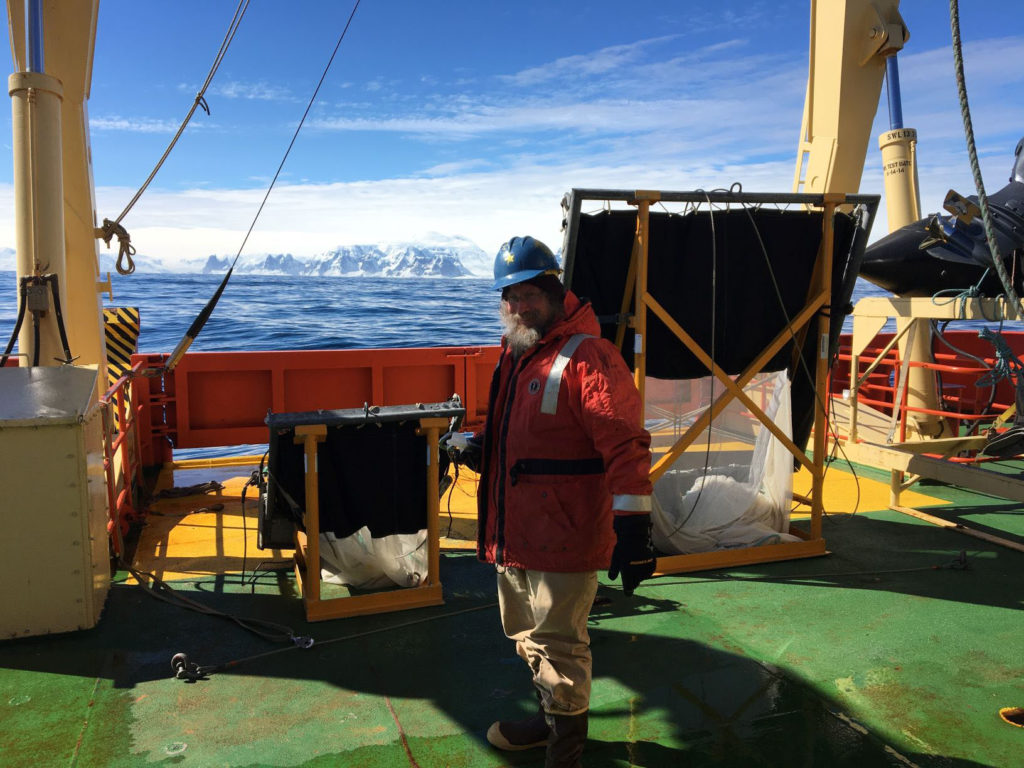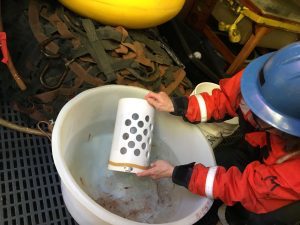And finally…nets away!

January 6 2019 (Note: this is #7 in a series of posts describing my NSF-sponsored fieldwork in Antarctica aboard the Laurence M. Gould).
It was a beautiful day. The seas were calm and the sun was shining, …AND ten days after leaving the states, we finally got to take our first zooplankton sample! We towed two different nets today – the openings (“mouths”) of the nets are tied to the big square metal frames behind Joe (above). The larger net (2 meters or about six feet across) has a coarse mesh, and is used for catching larger zooplankton like krill. The smaller net (about 3 feet across) has a finer mesh and catches more of the small animals, like the copepods that I am “hunting.” Today we did a total of three tows, and “the Krillers” sorted, measured and counted all the different groups of zooplankton.

Debbie emptying the contents of the cod end (the “bottom” of the net) into a tub. The larger elongated pink shapes are krill, a type of crustacean (favorite foods of lots of penguins and whales).
I learned as much as I could of the general zooplankton sampling routine, but I spent most of my time picking through one of the samples for copepods. I’m trying to sample three different species on this trip. Most of the copepods I saw were Calanoides acutus, and but I also spotted a Rhincalanus gigas. Since this is my first trip to Antarctica, I’ve never seen either of these “beasties” before, so I’m happy finally lay eyes on them. Since Calanoides seems to be the most locally abundant, I’m going to use my next sampling opportunity to preserve a whole bunch of them to bring back to my lab in Woods Hole for analysis (lipids, enzyme assays, gene expression). I’m also hoping to get enough to start a shipboard experiment with them. More about that tomorrow, I hope!